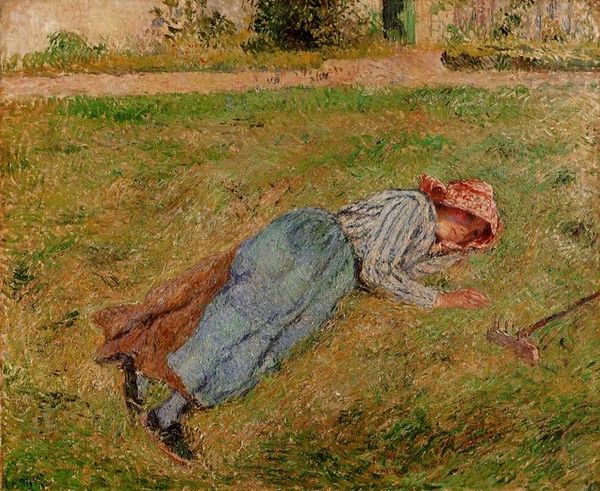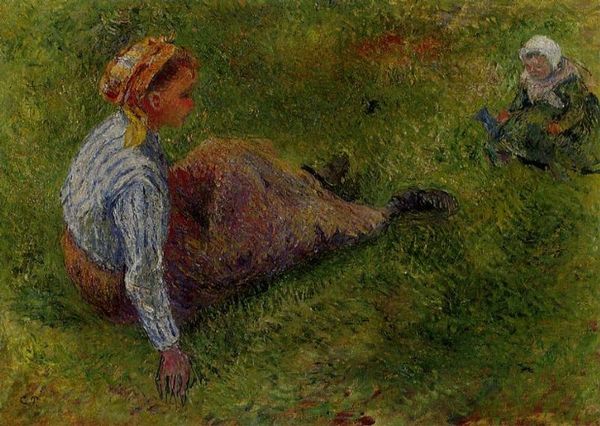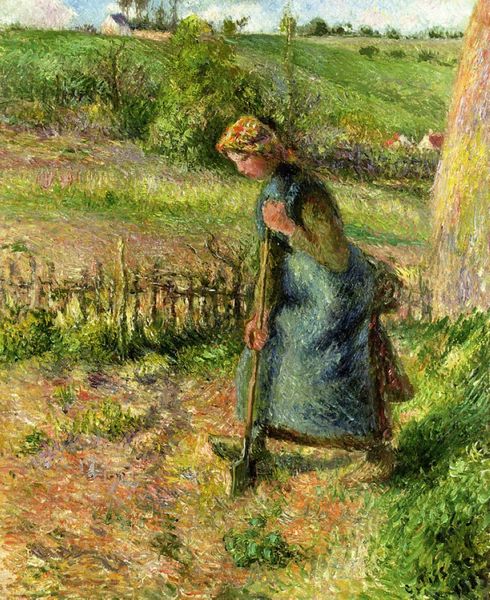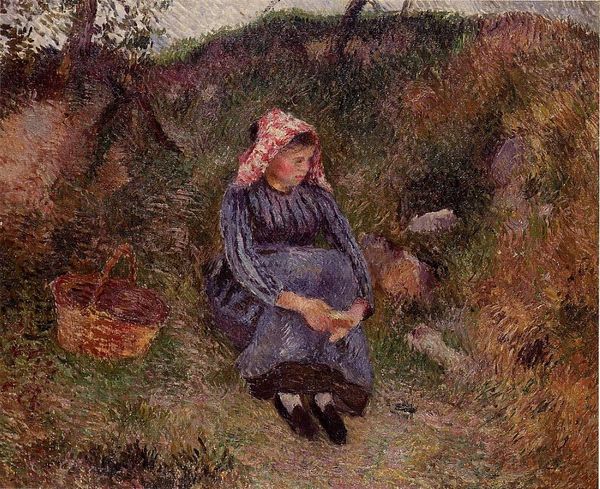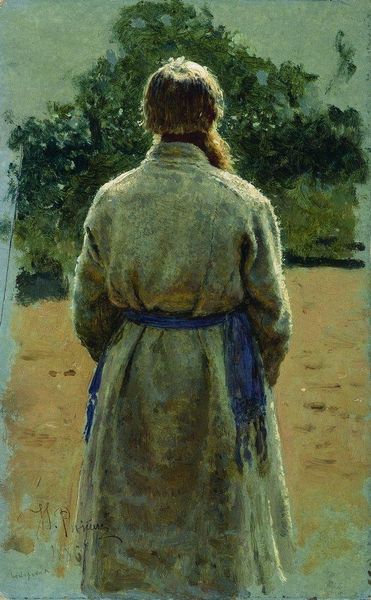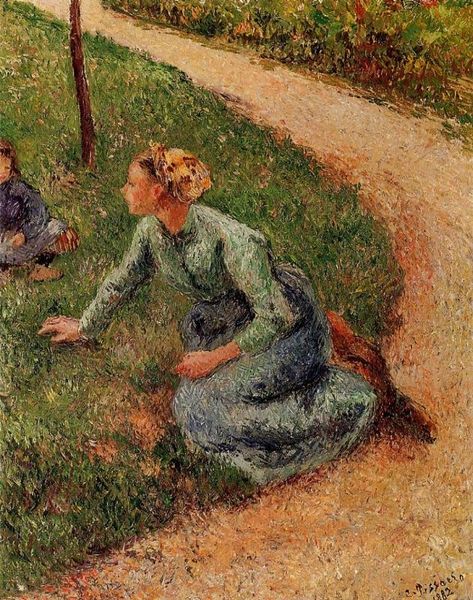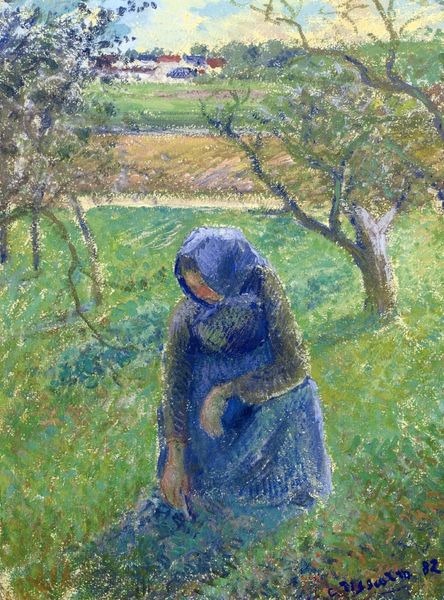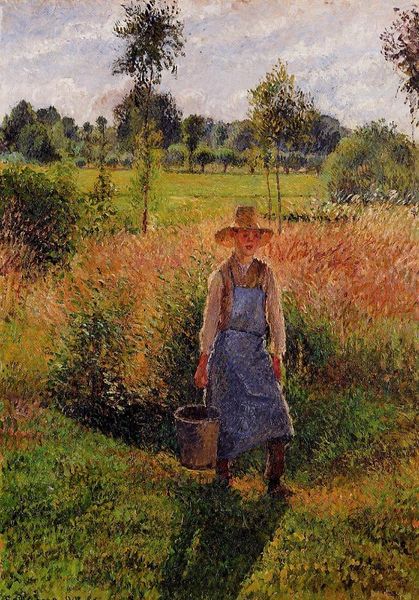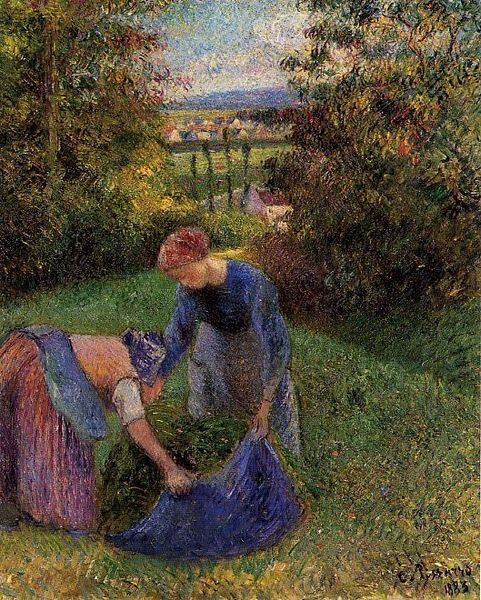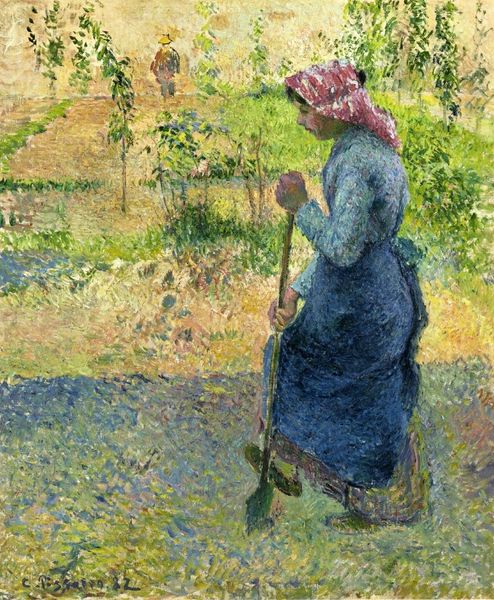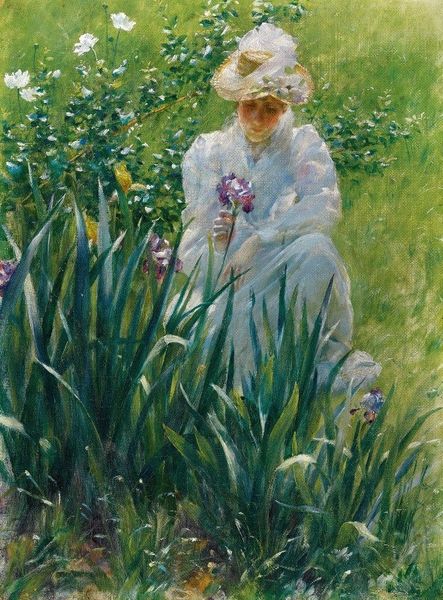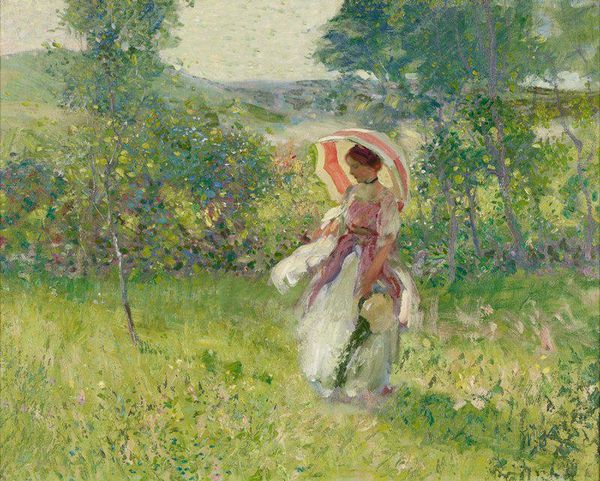
painting, plein-air, oil-paint
#
painting
#
impressionism
#
grass
#
plein-air
#
oil-paint
#
landscape
#
impressionist landscape
#
figuration
#
oil painting
#
genre-painting
Copyright: Public domain
Editor: This is Camille Pissarro's "Peasant Gathering Grass," painted in 1881. The use of oil on canvas creates this hazy, almost dreamlike atmosphere, despite depicting such an ordinary task. What can you tell us about it? Curator: Look at the visible brushstrokes, the materiality of the paint itself, to understand the social context. Pissarro isn't just depicting peasants; he's highlighting their labor. This wasn’t some detached observation, but a deliberate focus on the means of subsistence. Editor: So, the texture of the paint and the brushwork emphasizes their labor? Curator: Exactly. It makes visible the act of *making*. The thick application is not just aesthetic. It reflects the labor and the physical exertion required for this task, elevating it. How does the “plein-air” technique relate to this? Editor: Because it was painted outside, directly engaging with the landscape and the physical demands of working within it? It connects the artwork’s creation to the worker’s experience! Curator: Precisely. Consider also that the work challenges established boundaries, transforming the genre scene, usually rendered with higher finish, into impressionist art. And who consumes it? Whose labor does art ignore, or render beautiful in a way that is estranged from their everyday experience? Editor: That's powerful. I hadn't considered how the artistic process itself comments on the social context. Curator: It encourages a re-evaluation. By concentrating on the materials, tools and practices used, a social narrative opens for us. It definitely gave me a new appreciation for what this painting is doing. Editor: Me too! Seeing the painting as more than just a scene but a material statement makes a big difference.
Comments
No comments
Be the first to comment and join the conversation on the ultimate creative platform.
